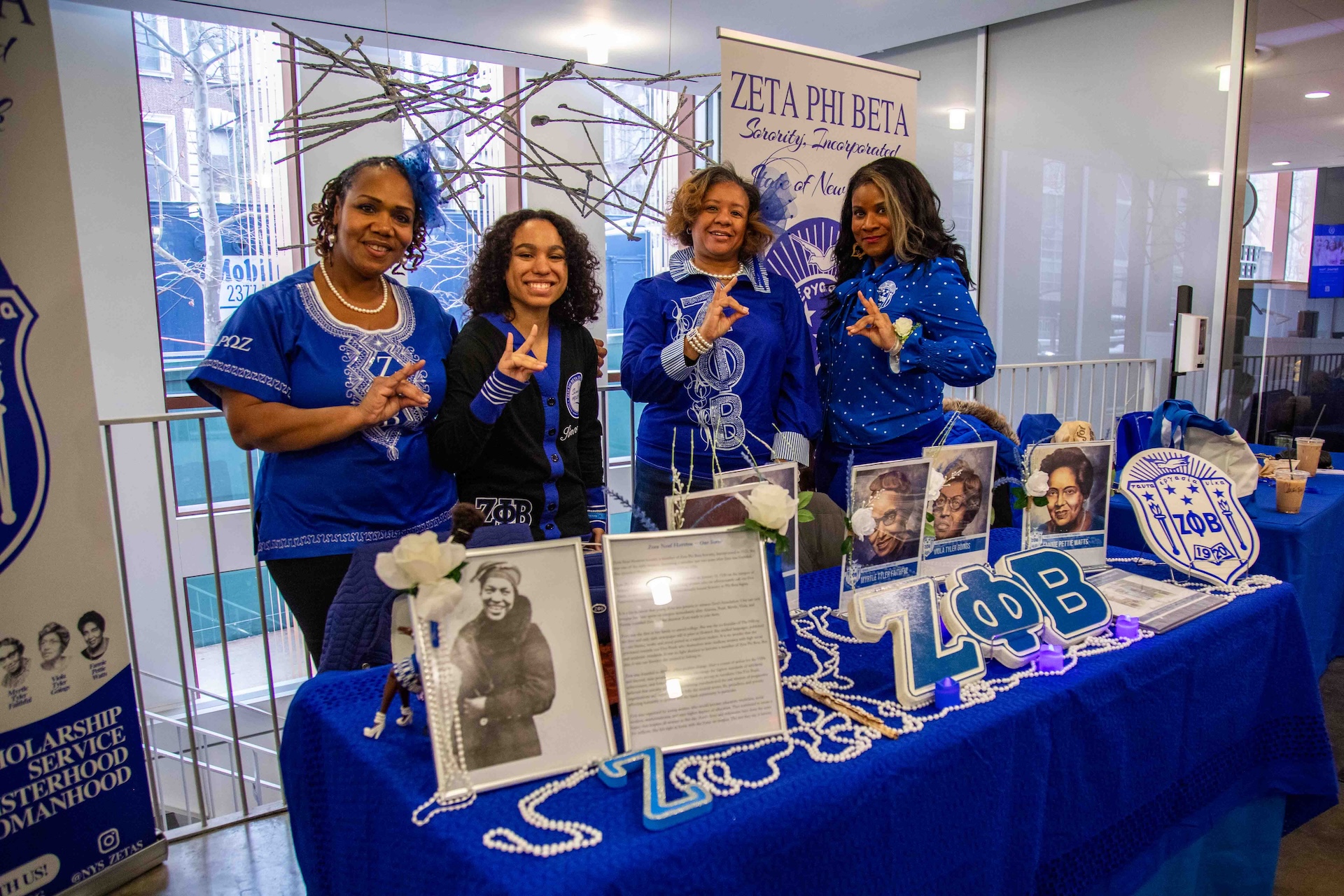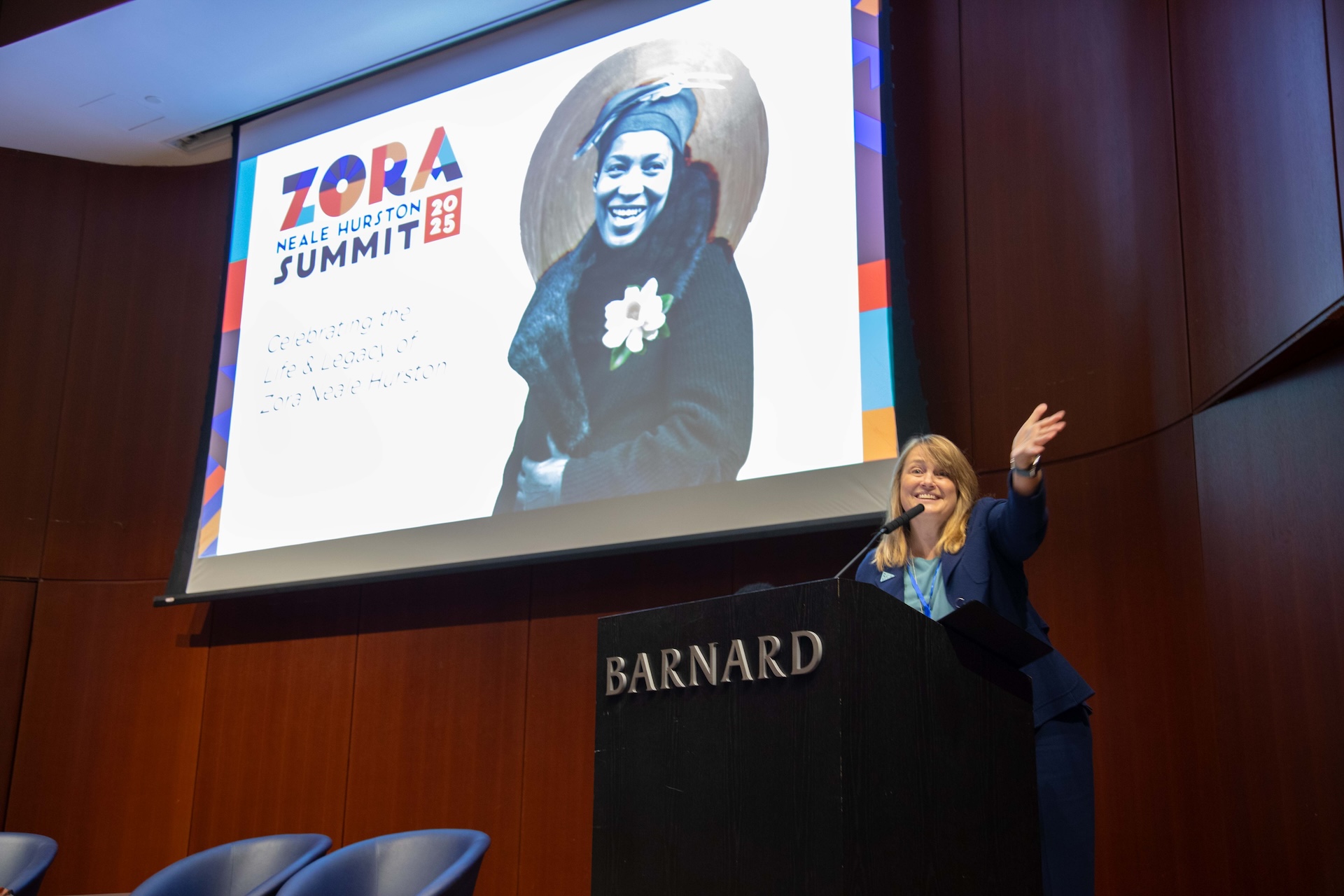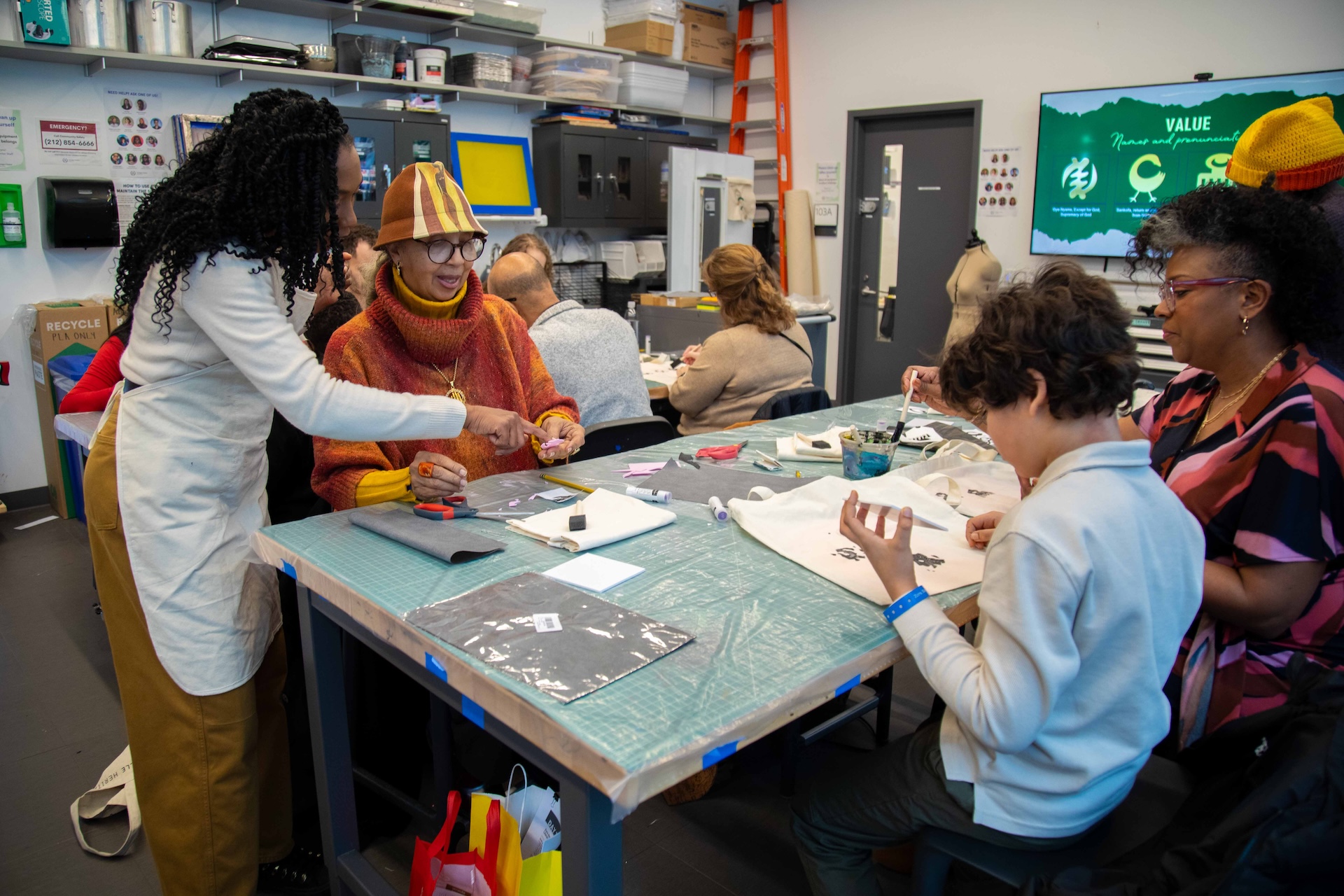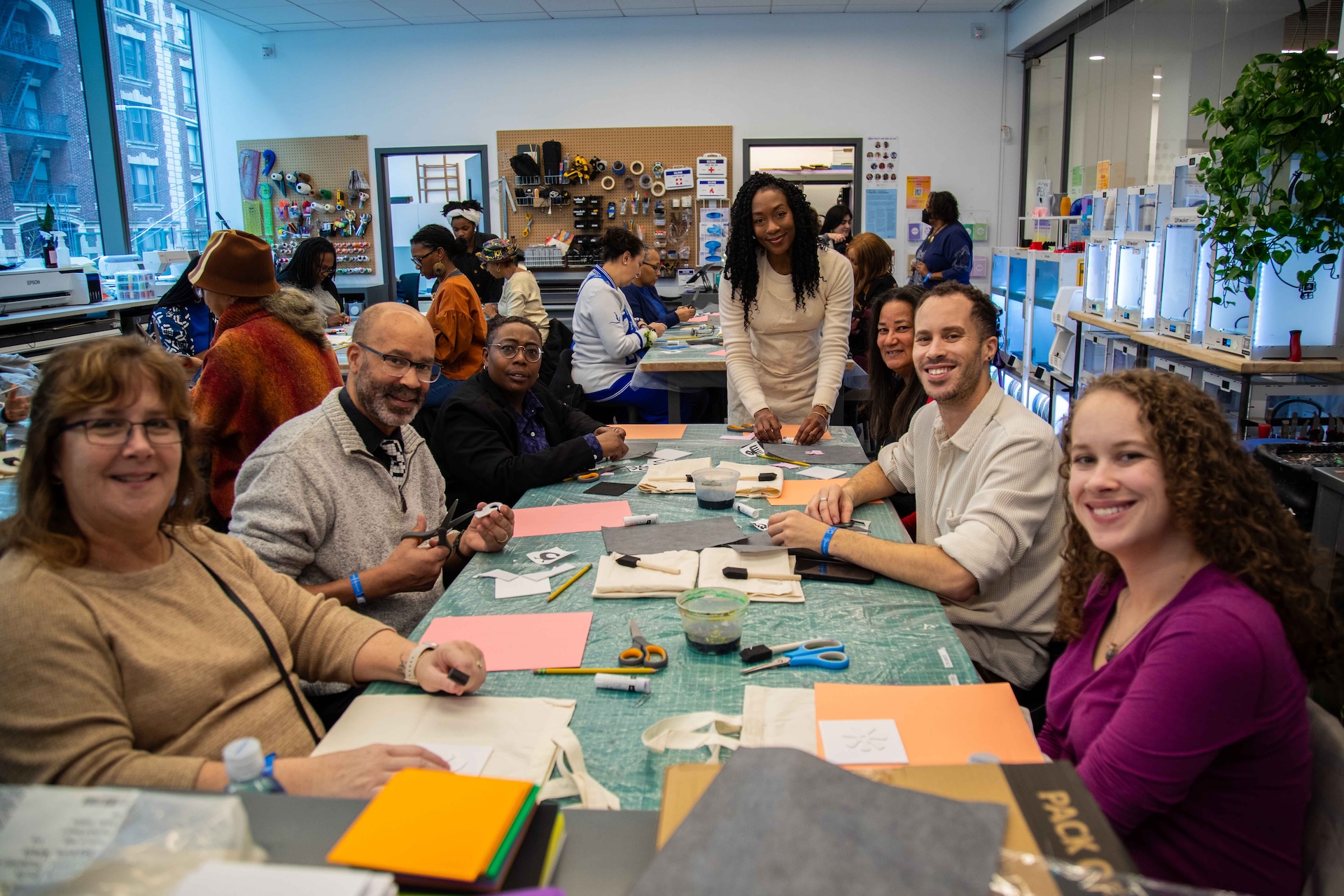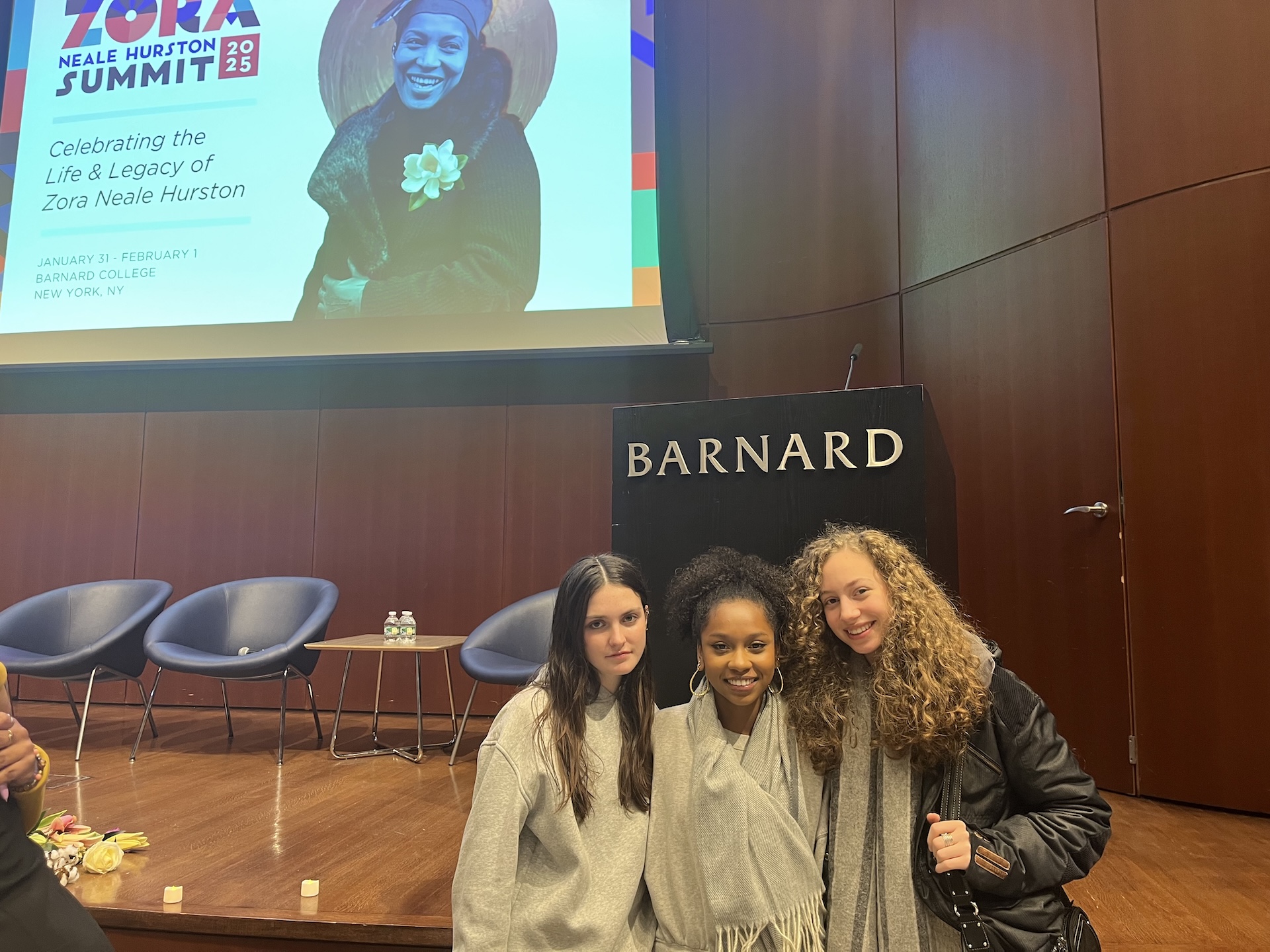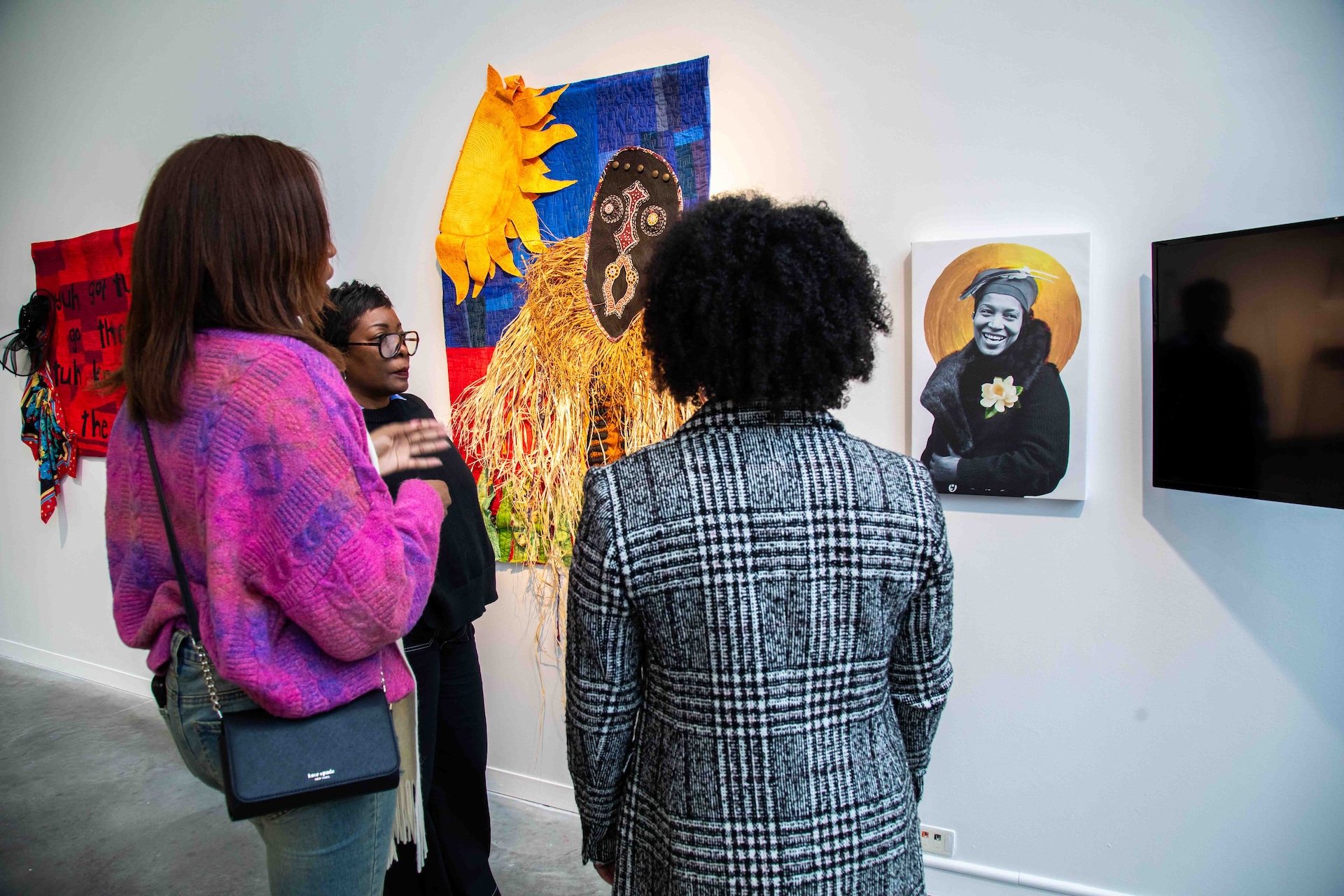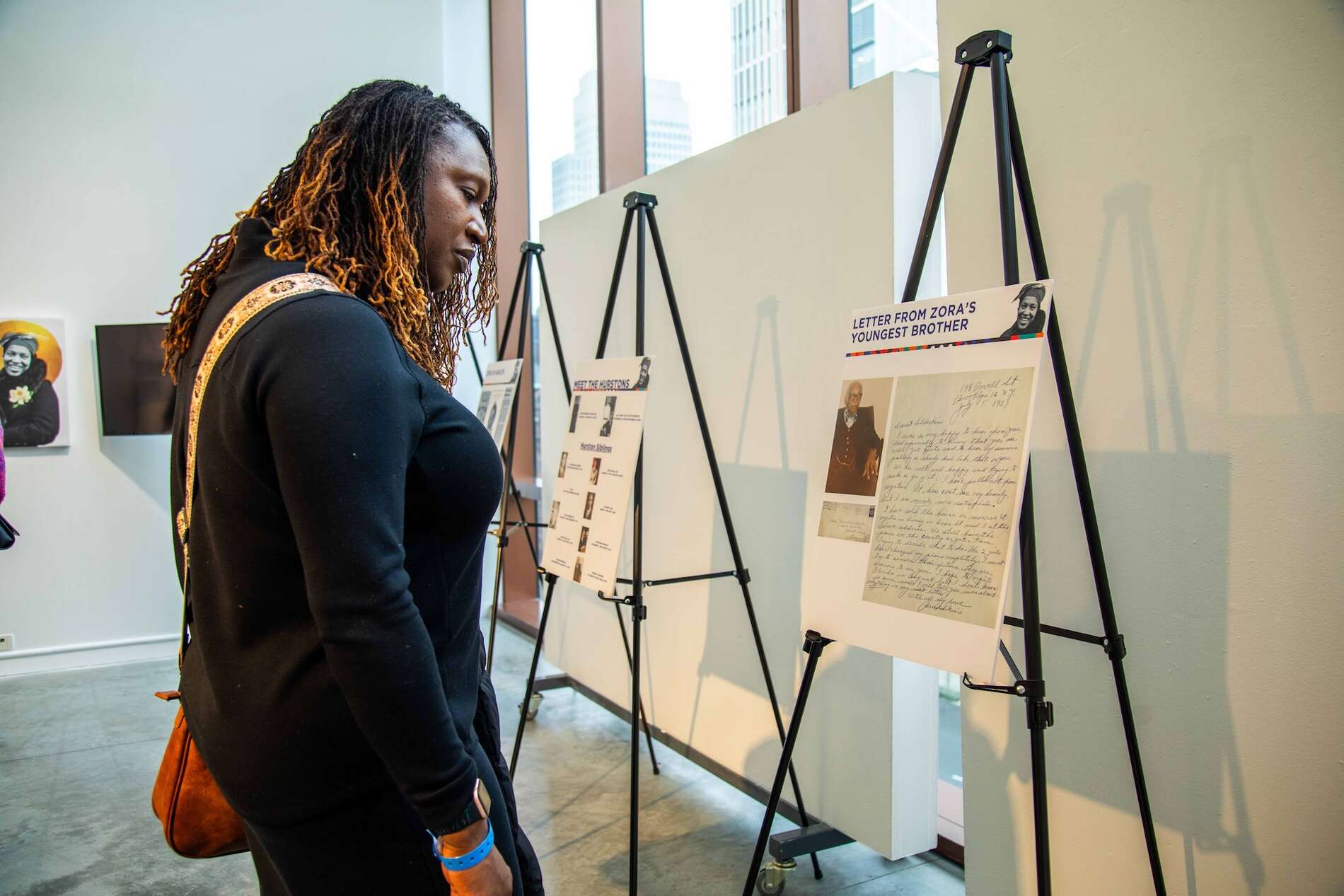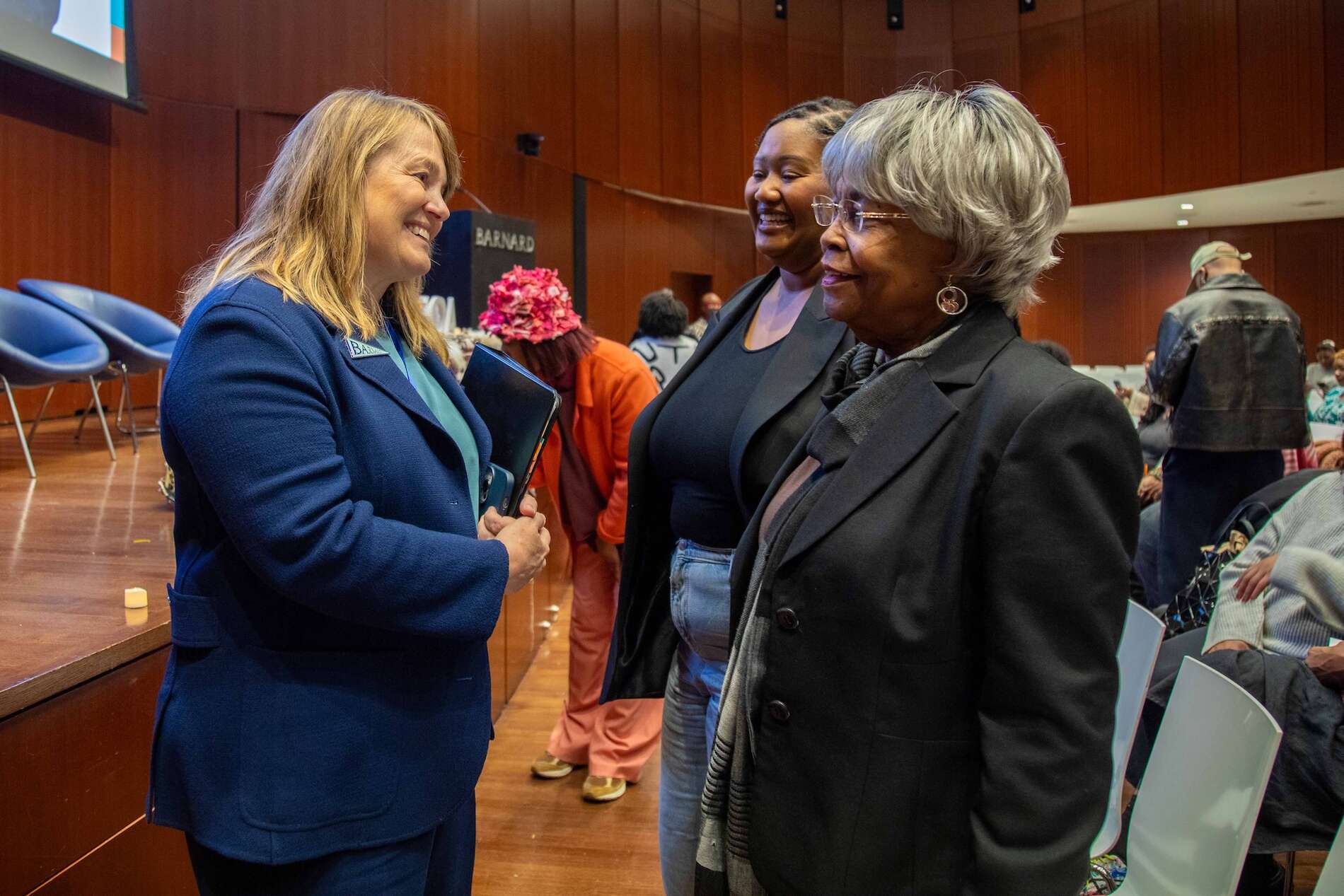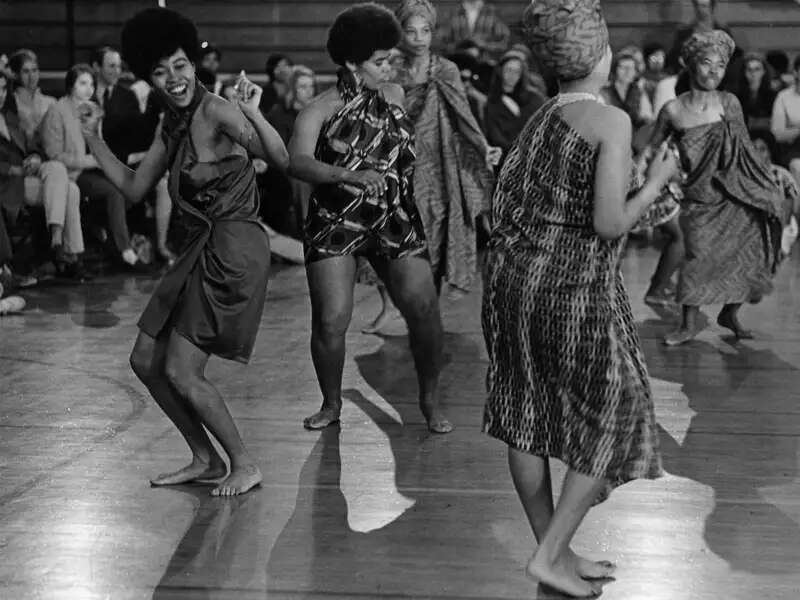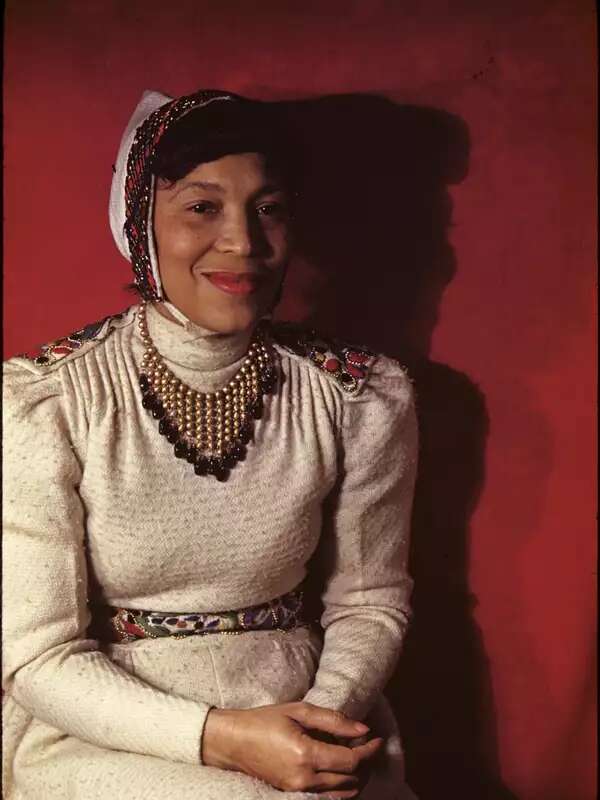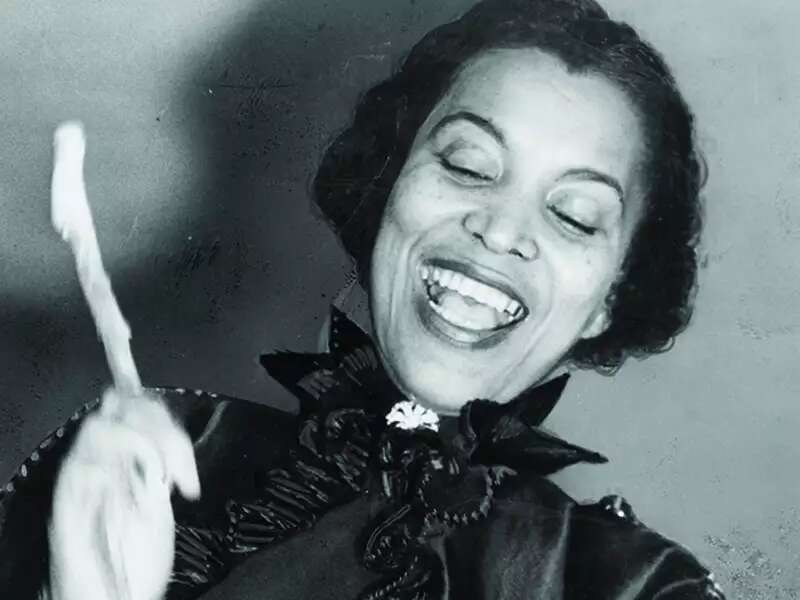Being “the first” is a rare feat and an accomplishment woven many times into the fabric of Barnard as a women’s college. So it was fitting that the inaugural Zora Neale Hurston Summit was held on the very campus where Hurston was the first Black student to enroll and graduate (1925–1928). Because the writer — one of Barnard’s most esteemed alumnae — is beloved by so many, the summit brought hundreds to campus to celebrate her life and anthropological, literary, and theatrical legacy.
The two-day event, which ran January 31 – February 1 and was organized by the Zora Neale Hurston Trust, exceeded expectations. “I’m representing my chapter, Sigma Nu Zeta, of the Zeta Phi Beta Sorority, Incorporated, and Zora, who was the first Black woman here attending as a Zeta, so I walk in her footsteps,” said visitor Camila Poe of her excitement.
“This is my first time in New York, and I’m very excited to be at the college where she was the first African American student,” said Karen Ann Lewis, who performed as Hurston in A Zora Tale: Roche’s Racist Hand with Cleveland’s Powerful Long Ladder ensemble theatre company. “It feels overwhelming [to play her]; Zora was such a trailblazer.”
Celebrating Zora’s Genius and Legacy
The robust program kicked off each day with remarks from Barnard community members President Laura Rosenbury and Provost and Dean of the Faculty Rebecca L. Walkowitz. Special guests from the Hurston family, members of the Zora Neale Hurston Trust, and vice president and editorial director at Amistad Books Abby West also shared comments.
“What an honor it is to be here with all of you today for the first Zora Neale Hurston Summit,” said President Rosenbury, to the packed room. “Zora was bold. Zora was fearless. And Zora was a trailblazer, and she paved the way for the Black students who followed in her footsteps here at Barnard. So we are absolutely honored that the Zora Neale Hurston Trust elected our campus to host this summit, aligning with our own upcoming celebration of Zora’s centennial as a student here and celebrating 100 Years of Black Students at Barnard.”
After thanking chair of Africana studies Monica L. Miller, Barnard’s Zora Neale Hurston Committee for spearheading this event, and other campus community members who made sure the event was seamless, President Rosenbury invited everyone back to campus on February 20 to continue the celebration with an on-campus lecture by Hurston’s fellow alumna and author Edwidge Danticat ’90.
President Rosenbury’s remarks were followed by “Zora’s Welcome: A Blessing of the Altar,” in which Chandra Dalan Pittman led the audience in an African ceremony of reverence that invited Hurston’s presence into the space as the sacred guest of honor with words of gratitude, as seen in the slideshow below.
Speaking on behalf of the Zora Neale Hurston Trust and the dozens of generational and proud family members who were in attendance, Hurston’s grandniece Lois Hurston Gaston addressed Hurston’s spunk. “Barnard was the thing that God put here for her to conquer, to make it better for others, to show us how,” she said. Rae Chesny, director of programs at the Trust, told the enthusiastic audience that the summit was envisioned as an upscale family reunion, saying, “You are all family now.”
Professor Miller and Chesny discussed Hurston’s experiences as Barnard’s first Black student and her work as an anthropologist. “One of Hurston’s primary objectives in life was to be curious and to stay curious,” said Miller. “She was always striving after informal and formal education. For many years of her life, informal education was always more accessible to her, but when she got the chance to get formal education, she took it.”
Influence on Culture, Literature, and Community Building
To engage with Hurston’s legacy is to explore the intersections of scholarship and art at which she worked. “I’ve been a fan of Zora Neale Hurston’s work my whole life, and my mother wrote a children’s book about her,” gushed Viviana Simon ’28, who proudly admitted she was inspired to attend Barnard because of Hurston. “I just want to take it all in and see all the different art that her art sparked.”
The summit provided a wide range of activities for participants (see above), including for children. Visitors had opportunities to attend multiple breakout sessions and panel discussions with experts who explored Hurston’s work in anthropology, including her fieldwork in 1927 and 1928 to research the nonfiction book Barracoon: The Story of the Last “Black Cargo,” published posthumously in 2018. National Book Award-winning author Ibram X. Kendi discussed the importance of introducing young readers to Hurston’s work early.
In addition to scholarship, summit attendees were treated to dramatized readings from Hurston’s seminal work on folklore, Mules and Men, by New York City’s National Black Theatre. For those who took the opportunity to explore campus, there was the chance to see the “Black, Brilliant and Free” exhibit that pays homage to Hurston, located in the Milstein Center for Teaching and Learning.
“[Zora] was a multihyphenate with great style who studied Black life and Black culture in a way that was radical for her time,” said OlaRonke Akinmowo, an NYC-based interdisciplinary artist and literary scholar who presented the Milstein Center artwork. “Daring and ambitious, also an independent thinker who did not look outside of herself for validation, she was the hero of her own story.”
“I am deeply moved by the new, to me, information about how Zora lost her Rosenwald Foundation grant to study for a Ph.D., and I never thought about what the designation of anthropologist might have meant for her in her lifetime,” said attendee Shalewa Mackall, independent artist and educator. “Those are two new things that I’m leaving this morning’s proceedings with.”
Before leaving campus, many attendees visited the Barnard Store and scored limited-edition merchandise created exclusively for the Zora Neale Hurston Centennial and 100 Years of Black Students at Barnard.
Check out more photos from the inaugural Zora Neale Hurston Summit, hosted by Barnard, below:
